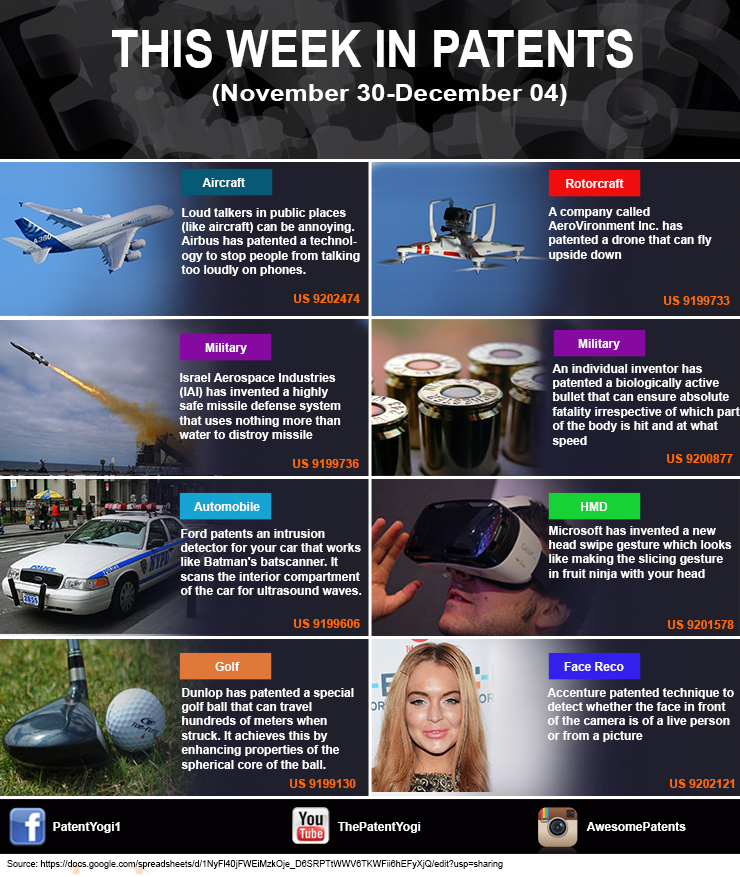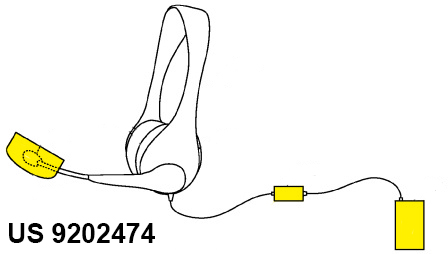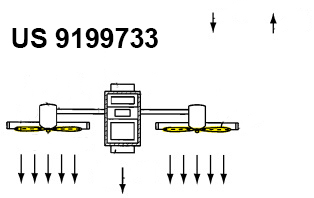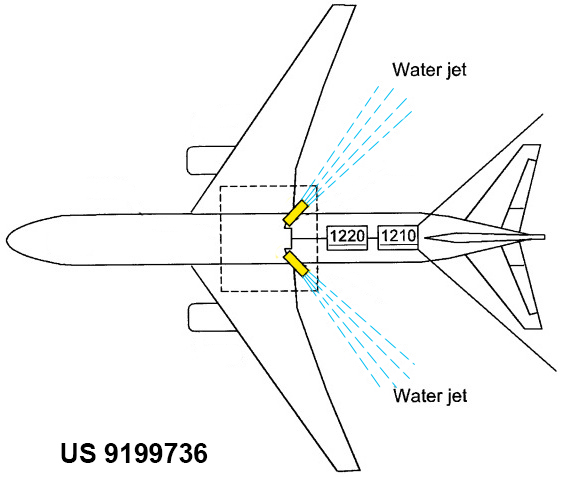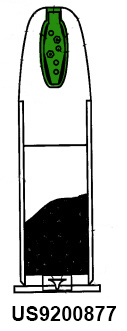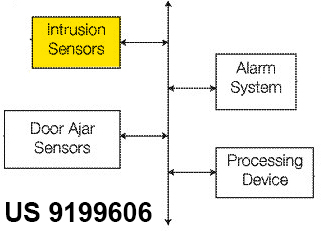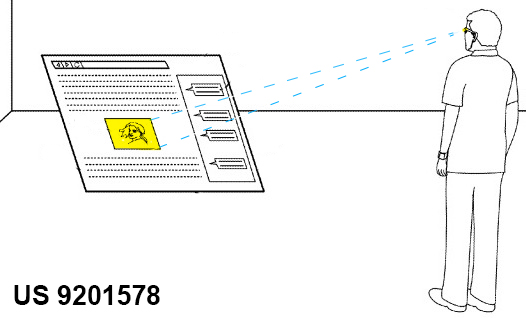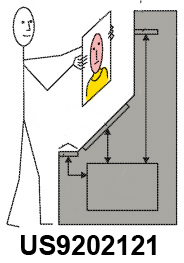Details of these 10 patents are provided below.
1. Effecting voice communication in a sound-restricted environment (Patent Number – US 9,202,474)
Airbus has patented a technology to stop people from talking too loudly on phones. Loud talkers in public places can be annoying. You may scorn at them or just walk away from the aural assault. But that’s not an option when you are 30000 ft above the ground. Fortunately, Airbus has invented a solution. The invention monitors the sound level of a person speaking into a phone and compares it to an acceptable sound level. When the person’s sound level exceeds the acceptable level, a warning is provided to the person to lower their voice. If the person continues to talk loudly, the invention automatically terminates the phone call.
2. Invertible aircraft (Patent Number – US 9,199,733)
A company called AeroVironment Inc. has patented a drone that can fly upside down. Use of drones in crowded indoor environments is fraught with danger. The drone could get knocked off objects like a ceiling fan, lights etc. What’s worse is that if the drone lands up-side down due to an impact, it may be stuck there like a beetle on its back struggling to flip. But this inventive drone can easily recover from such a predicament. It has a set of motors that can rotate the propeller blades by 180 degrees allowing the rotors to produce thrust in an opposite direction. The drone can thus lift itself up even when landed on its back.
3. System, a method and a computer program product for reducing damage by missiles (Patent Number – US 9,199,736)
Israel Aerospace Industries (IAI) has invented a highly safe missile defense system that uses nothing more than water. While water may seem innocuous in itself, at sufficiently high pressure, it can be powerful enough to even cut through steel. And this invention from IAI exploits the same power of water in protecting an aircraft against missiles. A missile detection system on board the aircraft detects an incoming missile and predicts it’s attack trajectory. Powerful jets of water are then directed towards the missile to intercept it to either deflect the missile away from the aircraft or decimate the missile into less harmful fragments.
4. Biological active bullets, systems, and methods (Patent Number – US 9,200,877)
That bullets can kill is well known. But not every bullet wound is fatal; at least not until now. An inventor has patented a biologically active bullet that can ensure absolute fatality irrespective of which part of the body is hit and at what speed. The bullet has a cavity at the tip filled with powerful toxins that can instantly kill the target. The outer part of the cavity is made of a material that easily dissolves in biological tissue thus releasing the toxins upon impact. Although the patent claims the use of these bullets to neutralize hostile targets, it may also be used to carry and deliver curative agents to non-cooperative targets such as animals.
5. Detecting vehicle door ajar using intrusion sensor (Patent Number – US 9,199,606)
Ford patents an intrusion detector for your car that works like Batman’s batscanner. It scans the interior compartment of the car for ultrasound waves. It specifically monitors for changes in frequency of the waves that may be caused due to vibrations when a door is opened or a window is broken. Further, while the intrusion detector is on, other sensors like door open sensors may be turned off. As a result, the intrusion detector can work round the clock without being a burden on the battery.
6. Gaze swipe selection (Patent Number – US 9,201,578)
Microsoft has invented a new head swipe gesture which looks like making the slicing gesture in fruit ninja with your head. Only in this case, the gesture doesn’t slice objects but selects them. When a user’s gaze falls on a virtual object, an intention to perform a head swipe gesture is detected. Subsequently, a cross-hair is displayed near the virtual object. Now to select the virtual object, the user has to simply maintain gaze on the virtual object and make a swiping motion of the head. The cross-hair follows the head swipe motion. When the cross-hair cuts through from one edge of the virtual object to another, the head swipe gesture has been completed and the virtual object may be selected or some predetermined operation may be performed.
7. Golf ball (Patent Number – US 9,199,130)
A good sportsman never blames his equipment. But here is a golf ball that can turn this adage on it’s head. Dunlop has patented a special golf ball that can travel hundreds of meters when struck. It achieves this by enhancing properties of the spherical core of the ball. The spherical core is formed from a rubber composition containing a base rubber, a co-crosslinking agent, a crosslinking initiator, a filler and a polynuclear aromatic organic sulfur compound. Further, the spherical core has a specific hardness distribution without decreasing hardness from a central point toward a surface of the spherical core. This feature enables the golf ball to attain great flight distances.
8. Liveness detection (Patent Number – US 9,202,121)
Ever wondered if a face recognition system can be fooled by presenting a picture of an authorized user? You could probably game most of them by twisting and turning the picture till it gives in. But not this one from Accenture. The invention is capable of detecting whether the face in front of the camera is of a live person or from a picture. It works by taking at least 5 images of the face in a sequence and looks for liveness indicators such as distance between eyes, face proportion, a size of an opened mouth, a direction of gaze and rate of blinking. It then analyzes how these liveness indicators vary between the sequence of images to conclude whether it is a live person in front of the camera. For example, presence of at least blink of the eyes or difference in mouth opening across images may indicate liveness of the person.

